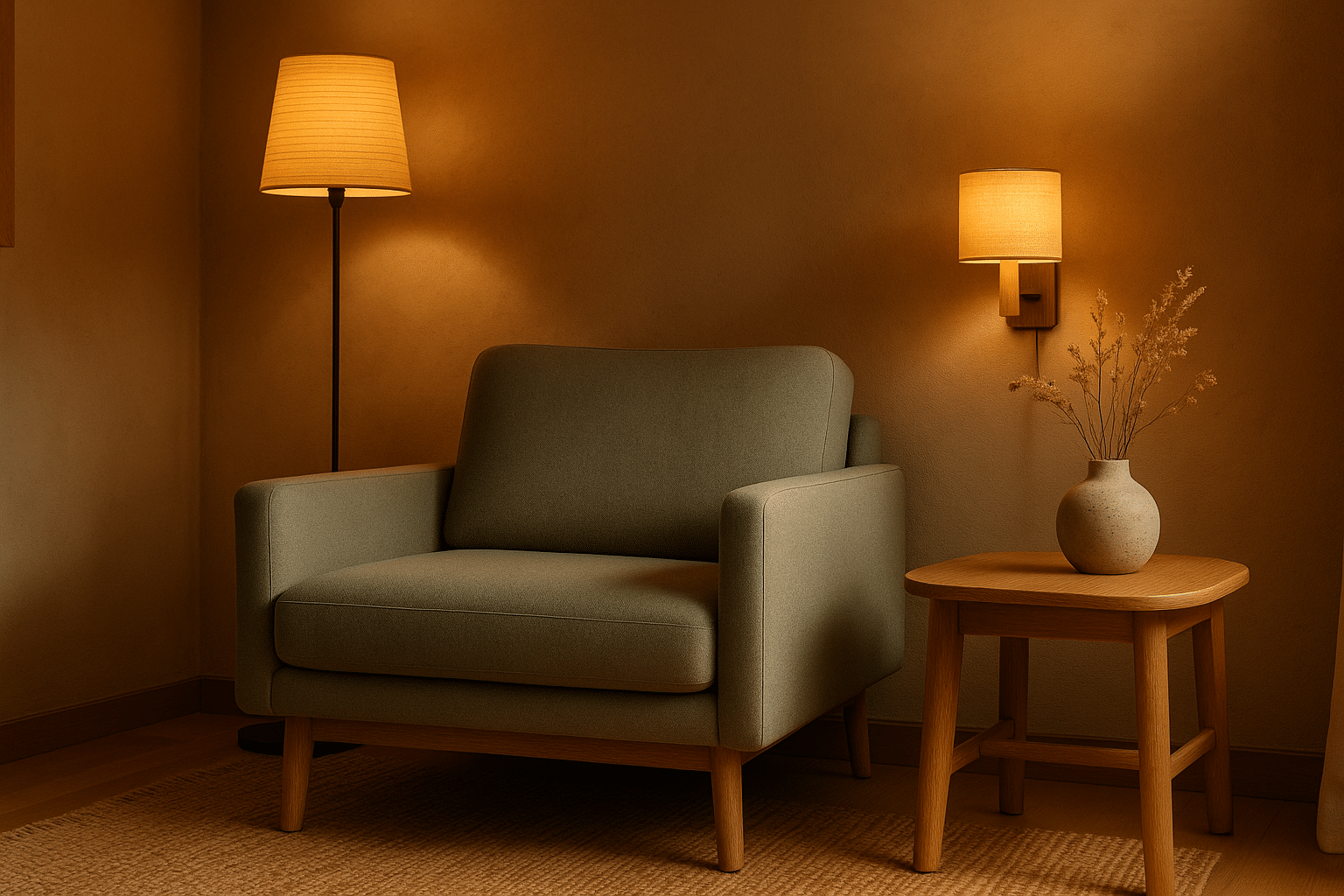A Japandi living room is all about calm, comfort, and clean design. By mixing Japanese minimalism with Scandinavian warmth, it creates a space that feels bigger, softer, and easier to live in—without sacrificing beauty or function.

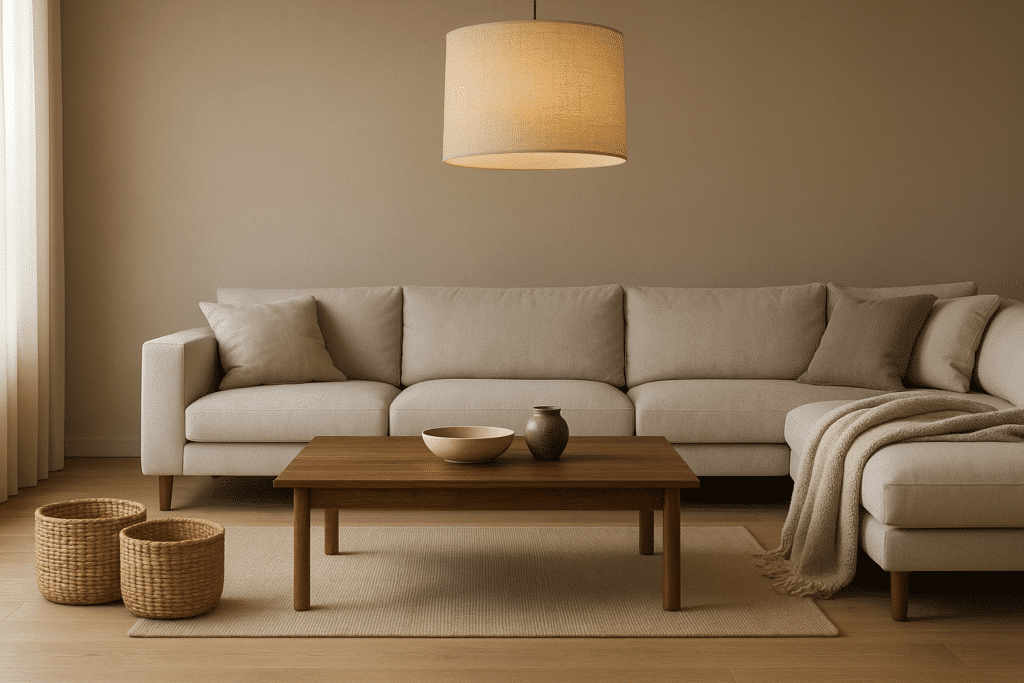
Why I Switched to a Japandi Living Room
I used to walk into my living room and feel… crowded. Not just by furniture, but by noise I didn’t notice until I started stripping it all away.
Too much stuff. Too many colors. Too many things that looked good online but didn’t feel right in real life.
I wanted calm. I wanted clarity. I needed a Japandi living room.
This isn’t just about looks—it’s about feeling like your home finally breathes. Like your brain can take a break. And every single thing you see makes sense.
Here’s how I did it—and what actually worked.
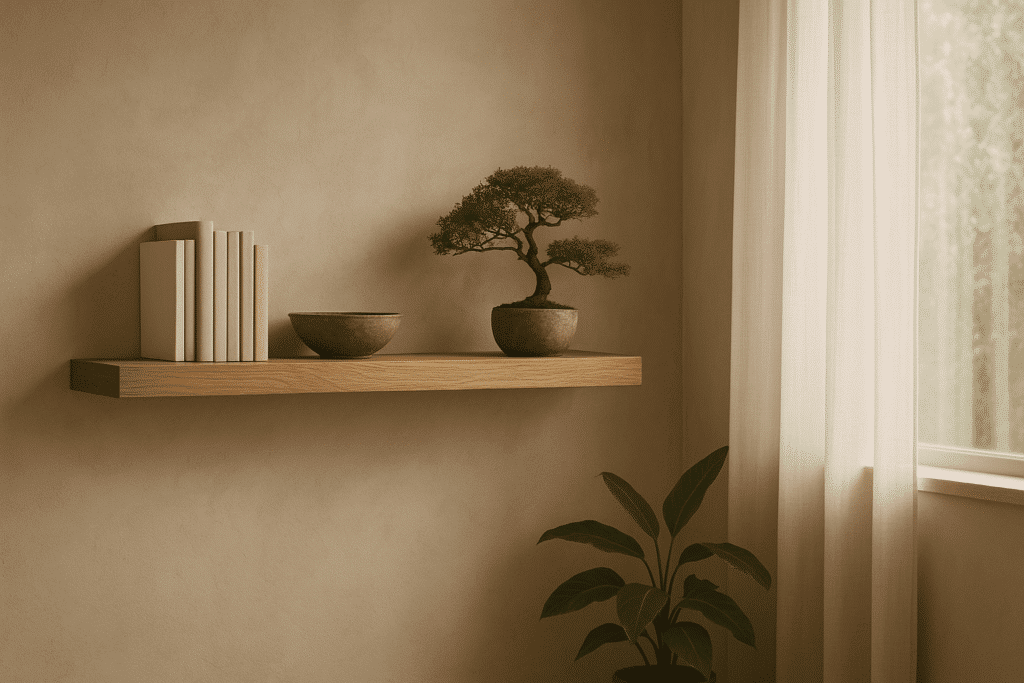
⚡ Key Takeaways About Japandi Living Room Design
| Insight | Why It Matters |
|---|---|
| Neutral tones dominate | Keeps the space open, calm, and timeless |
| Natural materials only | Wood, linen, and stone bring warmth and texture |
| Multifunctional furniture | Saves space without sacrificing design |
| No clutter, period | Negative space is the whole point |
| Smart features stay hidden | Keeps tech useful but invisible |
| Eco-friendly choices | Reclaimed wood and organic fabrics are Japandi basics |
| Light is everything | Daylight first, soft warm lamps second |
| Personal touches are welcome | It’s minimal, not soulless |
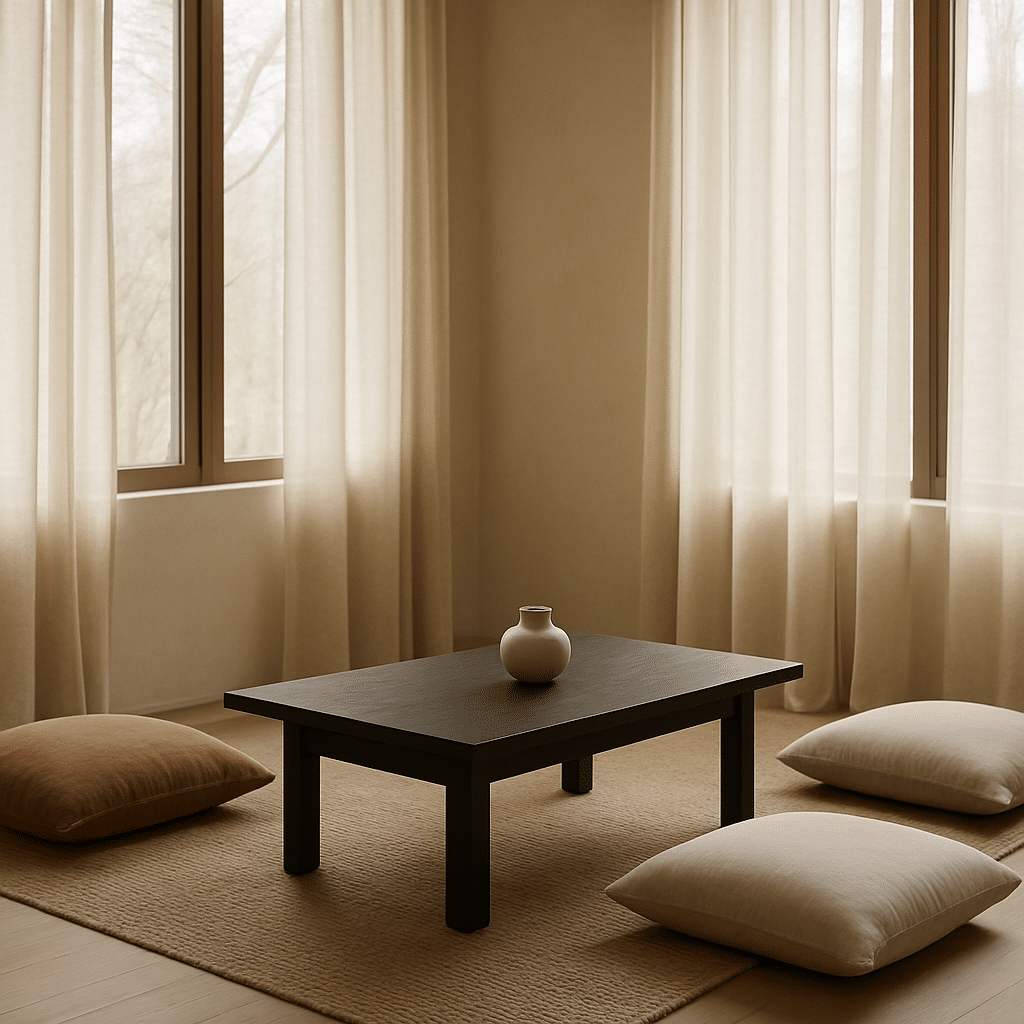
What Is a Japandi Living Room, Really?
A Japandi living room blends Japanese and Scandinavian design ideas. Think clean lines, muted colors, natural materials, and just enough warmth to make minimalism feel like a hug instead of a design statement.
And it’s not new. Scandinavian design has been about comfort and function since IKEA was a baby. Japanese aesthetics have always centered around intentional living—quiet, nature-inspired, and perfectly imperfect.
Put them together, and you get a design that’s calm but not cold. Warm but not cluttered. Minimal but never boring.
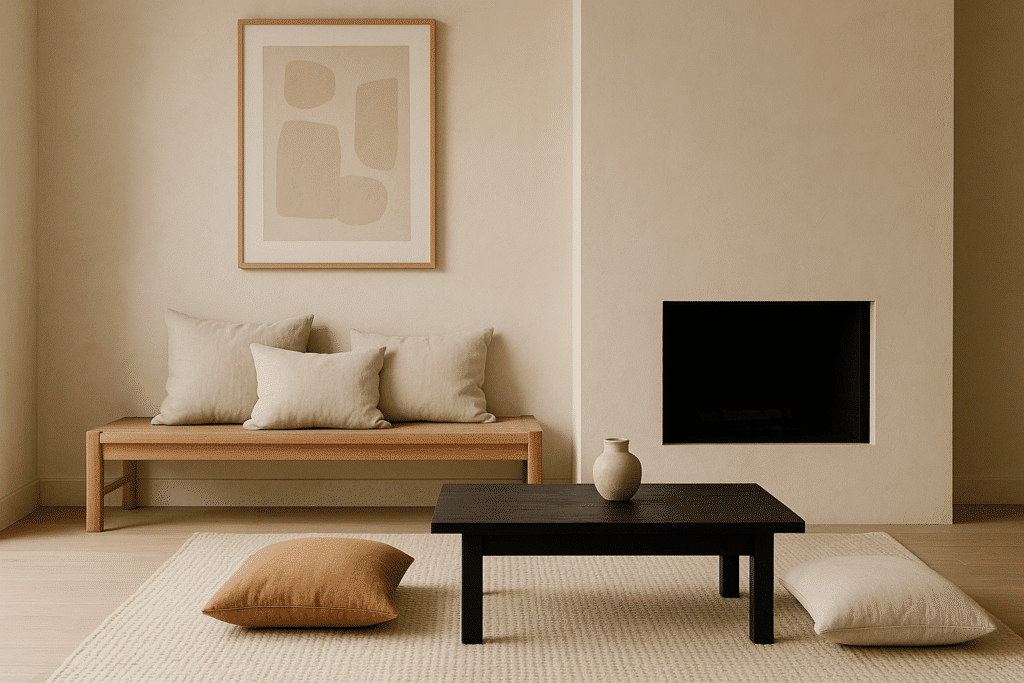
Why Japandi Works in Real Life
If you’ve ever lived in a small apartment or a space that feels too “busy,” this design style hits differently.
Here’s what changed for me:
- My brain stopped buzzing every time I walked in.
- Cleaning became faster (fewer things = less dust).
- I actually used my living room instead of just styling it for guests.
- Everything felt more intentional—even my downtime.
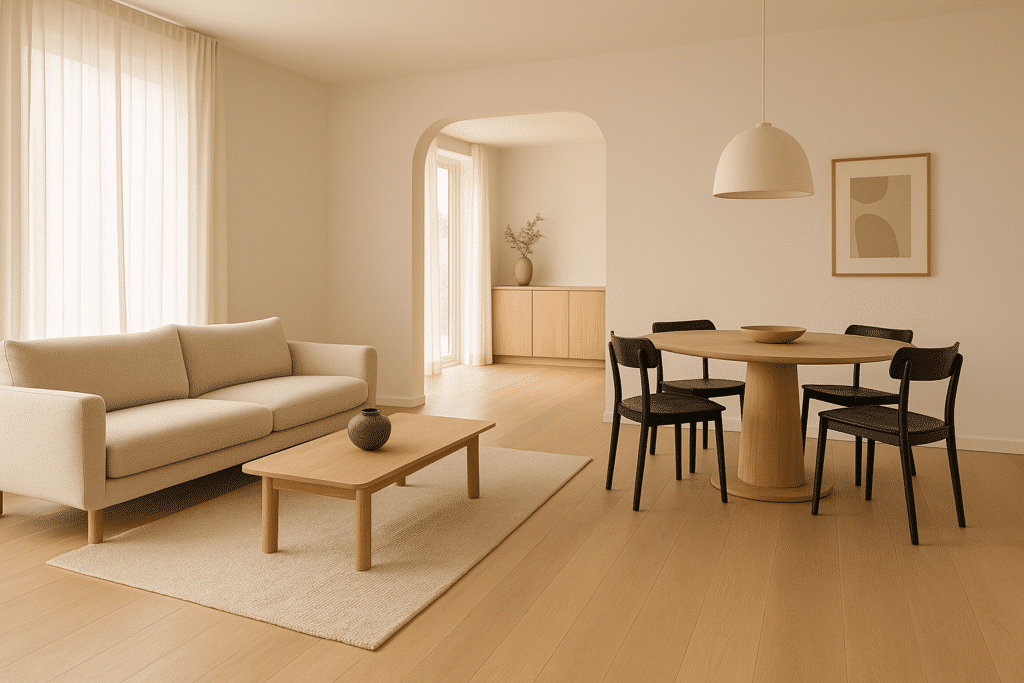
Japandi Living Room Design Basics
Let’s break down what makes it work.
1. Neutral Color Palettes
Japandi isn’t beige and boring—it’s grounded. It’s cream walls, soft gray textiles, earthy greens, muted blacks, and warm wood tones.
You might see:
- Pale oak floors
- Charcoal linen curtains
- Clay-colored cushions
- Off-white walls
These colors don’t fight for attention. They let light bounce around and make the room feel twice as big.
2. Low-Slung Furniture
Everything sits closer to the floor. Sofas, chairs, tables—they all hug the ground.
Why?
- It creates openness above.
- It feels calm.
- It visually “grounds” the room.
I replaced my chunky couch with a platform sofa in soft linen. Instant mental exhale.
3. Natural Materials, Always
Wood. Linen. Stone. Wool. That’s the checklist.
Not plastic. Not lacquered MDF. Not shiny metals.
Look for:
- A solid wood coffee table with clean lines
- Hand-thrown ceramic bowls as decor
- A jute rug underfoot
- Linen throws and pillow covers
The texture is subtle but makes the space feel human.
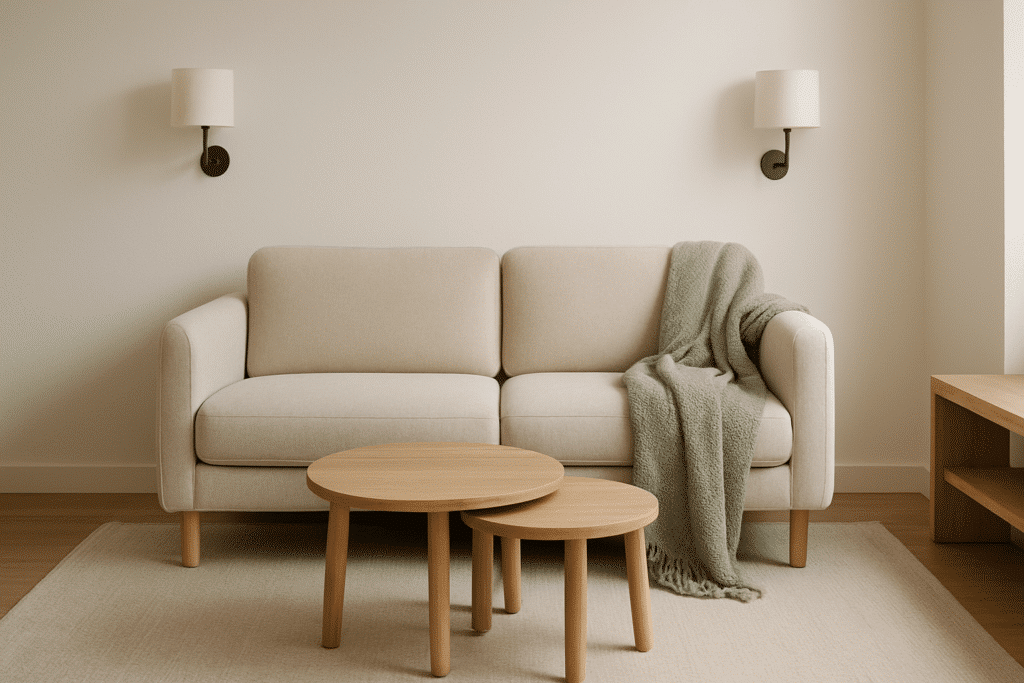
Smart Storage = Less Visible Clutter
Japandi isn’t about displaying everything you own.
Use:
- Baskets with lids
- Benches with hidden compartments
- Sideboards with smooth, handle-less fronts
And don’t feel pressure to decorate every shelf. Leave some space blank. That’s the Japanese concept of “Ma”—the pause, the breathing room between things.
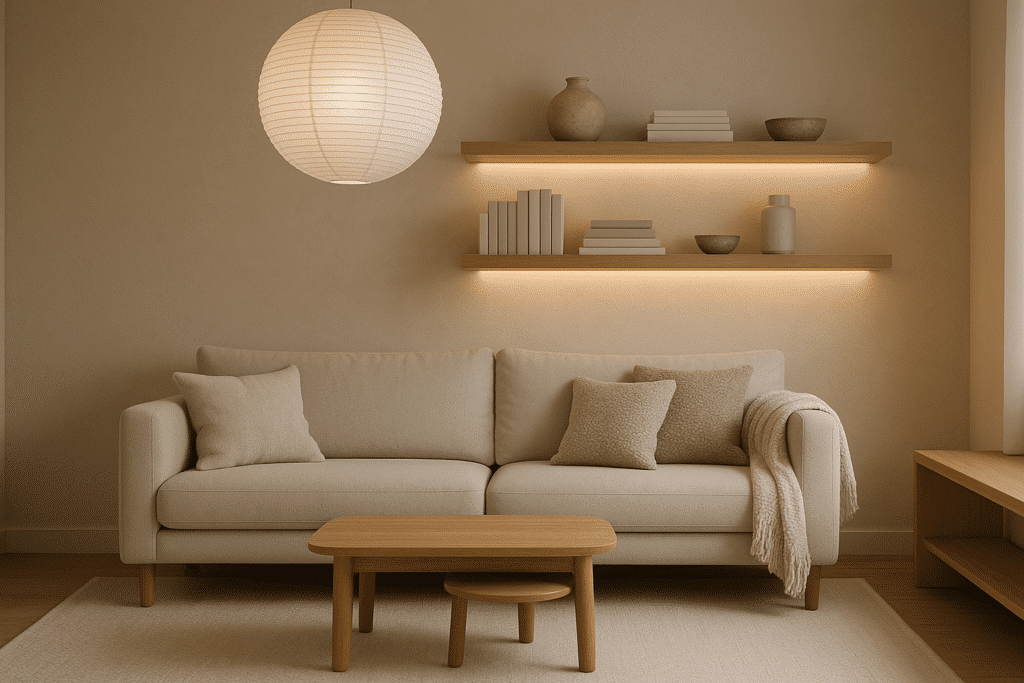
Light Matters More Than You Think In a Japandi Living Room
The right lighting makes or breaks a Japandi living room.
Here’s how I layered mine:
- Natural light: Sheer curtains, no heavy drapes
- Warm ambient lighting: Paper lanterns or fabric-covered lights
- Accent lighting: LED strips under shelves, floor lamps beside the sofa
Go for warm bulbs—2700K to 3000K. That yellow glow is what makes the room feel soft, not sterile.
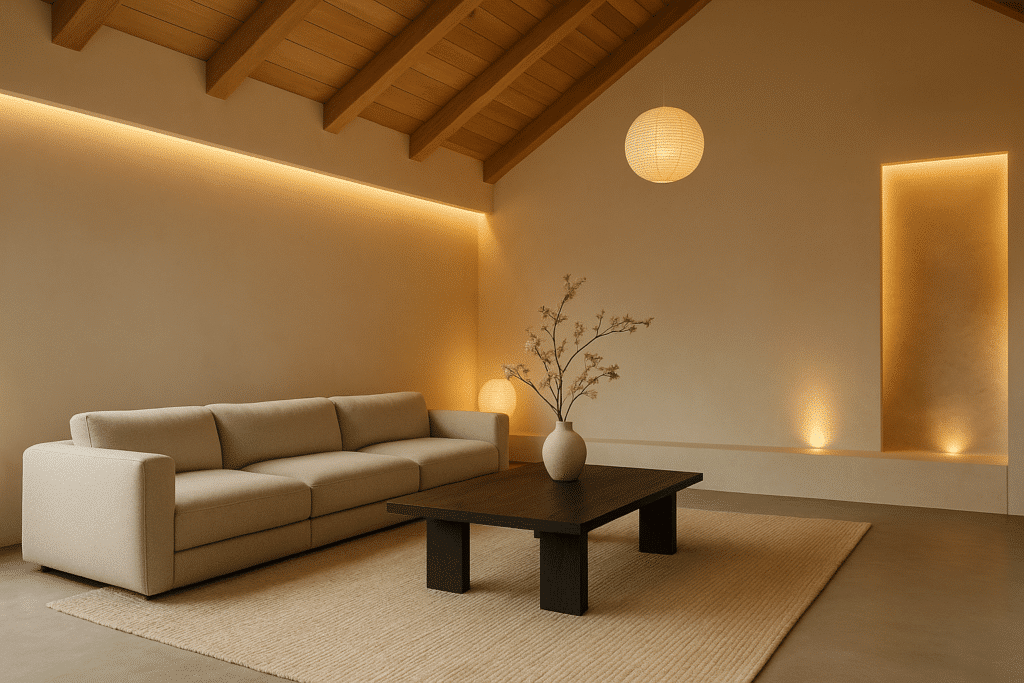
Japandi Living Room Layout: Leave Space to Breathe
Japandi isn’t a furniture showroom. You want space to move, walk, sit, lie down—even on the floor.
Tips that worked for me:
- Place the biggest item first (usually the sofa)
- Don’t push everything to the walls—pull it inward slightly
- Leave walking paths open
- Don’t over-decorate corners
If your living room feels a bit “empty” at first, you’re doing it right.

Sustainability Is Built Into a Japandi Living Room
Japandi isn’t just an aesthetic—it’s a mindset.
If you want your space to feel aligned with this style, think long-term:
- Buy fewer, better items
- Choose solid wood over veneers
- Pick textiles made from natural fibers
- Reuse what you can, recycle what you can’t
It’s about surrounding yourself with quality, not quantity.
My Favorite Japandi Living Room Furniture Finds
You don’t need a full remodel. A few smart swaps make a huge difference.
Here are some MVPs:
- ATILLA Ottoman – doubles as seating and hidden storage
- IKEA BJÖRKSNÄS Sofa – low-profile, clean lines, solid birch
- Castlery Sacha Sideboard – sleek, oak finish, zero clutter
- Luminesy Paper Pendant Light – softens any space immediately
Buy slow. Live better.
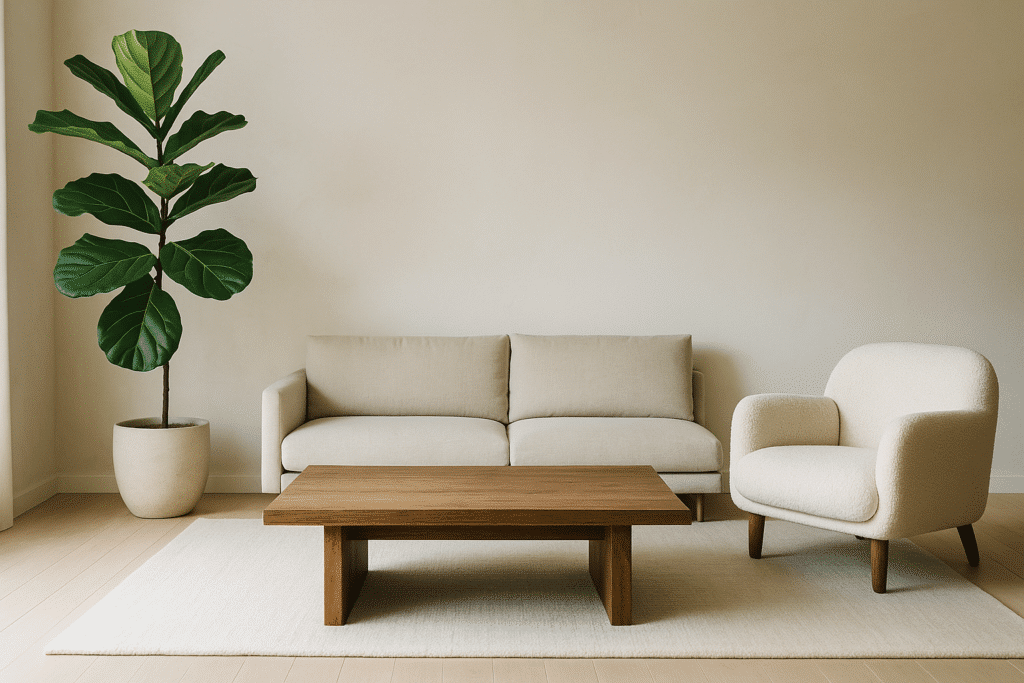
How to Add Personality Without Breaking Japandi Vibes
Yes, Japandi is minimal—but it doesn’t have to be cold.
Add character like this:
- One large-scale art piece in neutral tones
- A handmade vase with branches or dried stems
- Books arranged horizontally in open shelves
- One vintage item from a flea market—ceramics, stools, trays
Keep it meaningful. Don’t add just to fill space.
Japandi Living Room Ideas for Small Spaces
Small room? Even better. Japandi thrives in tight layouts.
What worked for me:
- Floating shelves over floor bookcases
- Foldable or nesting tables
- Mirrors to bounce light and expand the feel
- Window seats with built-in drawers
The goal is efficiency without sacrificing calm.
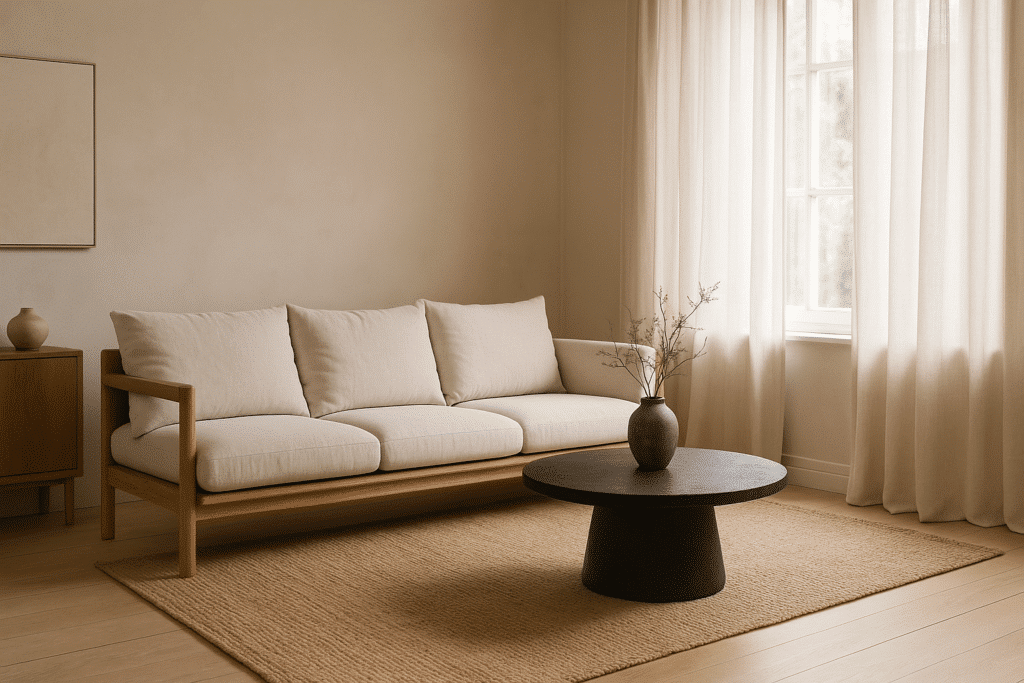
FAQs About Japandi Living Room Spaces
Is Japandi expensive?
Not always. It’s about fewer items with better function. IKEA, Castlery, and secondhand markets all carry great Japandi-style pieces.
Can Japandi work in a colorful home?
Japandi tones are muted, but you can layer in sage greens, rusts, or navy blues. Just keep it earthy and calm.
What’s the difference between Japandi and minimalism?
Minimalism removes everything. Japandi refines what stays—warm, textured, and useful things remain.
Is Japandi only for modern homes?
No. Japandi fits well in older homes too—just stick with clean lines, natural materials, and simple layouts.
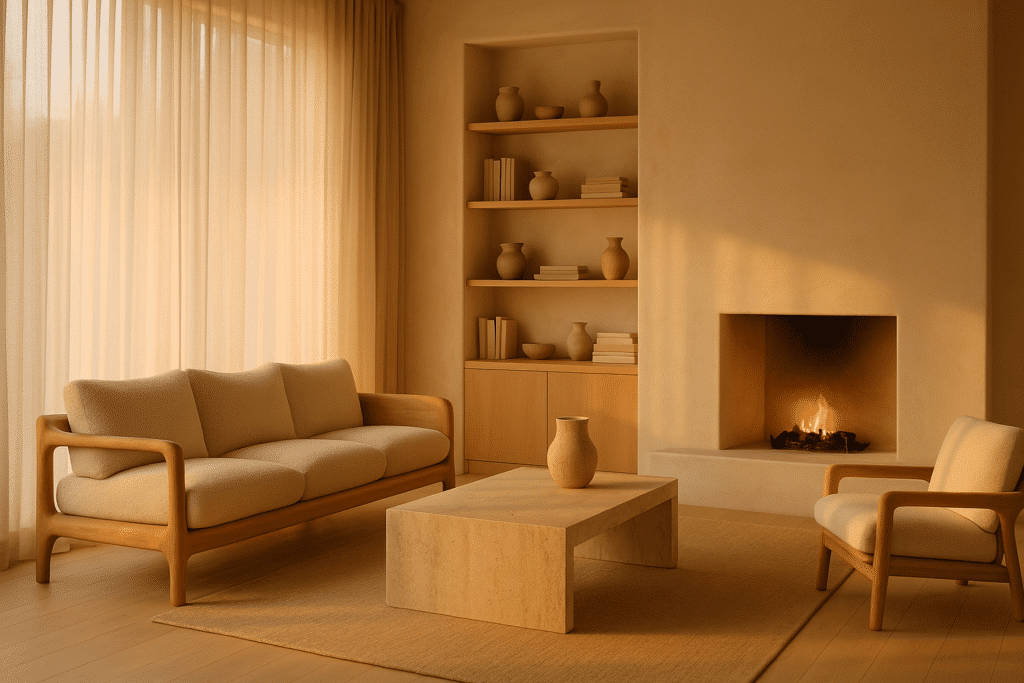
Where to Start with Your Own Japandi Living Room
Start with subtraction.
Clear out the visual noise. Then, rebuild with intention.
Here’s what to do:
- Choose your palette: Keep it soft, grounded, and neutral.
- Pick the anchors: Sofa, rug, lighting. Then build around them.
- Bring in texture: Wood, linen, stone.
- Keep decor minimal: One shelf > cluttered walls.
- Let light lead: Use daylight first. Add soft, warm lighting after dark.
- Buy slow: You’re not finishing this in a weekend—and that’s the point.
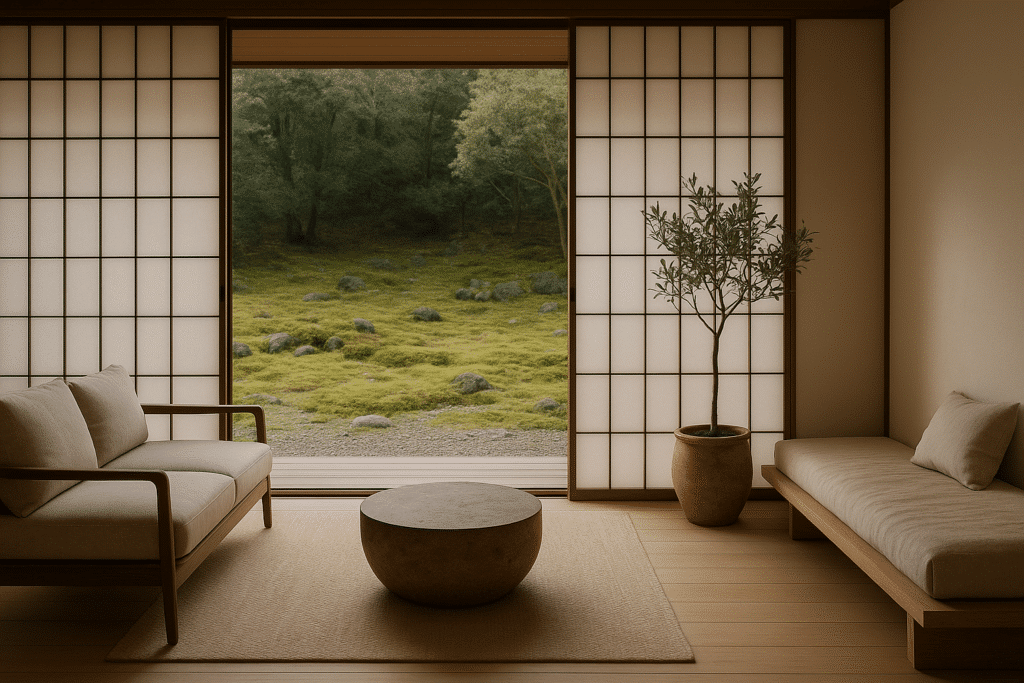
The Bottom Line
A Japandi living room isn’t just about what you add. It’s about what you remove—what you leave out to make space for clarity, warmth, and calm.
It’s where style meets peace.
And trust me: once you feel it, you’ll never want to go back.
Want help choosing furniture, colors, or layouts for your Japandi-inspired space? I’ve been there. And I can walk you through every decision—one low shelf, soft rug, and linen curtain at a time.
